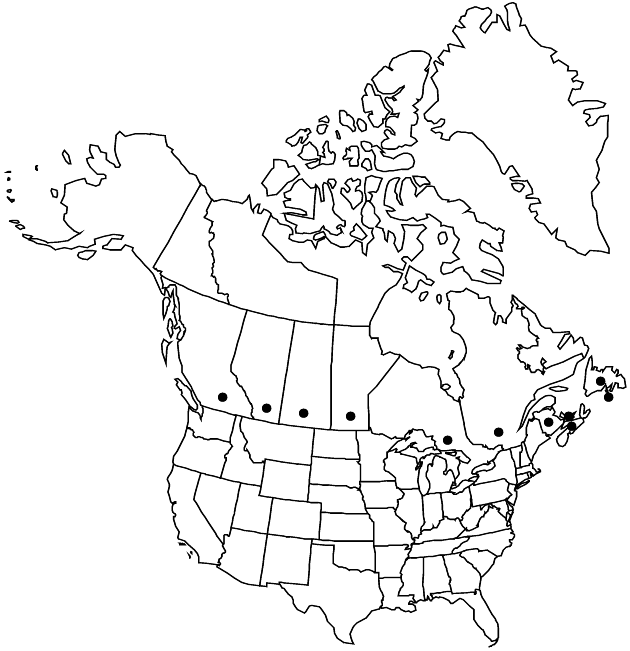Senecio viscosus
Sp. Pl. 2: 868. 1753.
Annuals, (10–)20–40(–60) cm (taprooted). Herbage densely fetid-viscid (hairs glandular). Stems single. Leaves evenly distributed; petiolate; blades obovate to oblong (pinnately dissected to pinnatifid), 2–7 × 1.5–4 cm, bases tapered or ± truncate, ultimate margins wavy or crenate-dentate (distal leaves sessile, smaller, ± clasping). Heads (1–)3–8(–30) in irregular, corymbiform arrays. Calyculi of 2–5 bractlets (largest to 4 mm). Phyllaries (± 13) ± 21, 5–7 mm, tips black. Ray florets ± 13; corolla laminae 1–2 mm (usually coiled, scarcely surpassing phyllaries). Cypselae usually glabrous, sometimes hairy. 2n = 40.
Phenology: Flowering spring–fall.
Habitat: Disturbed sites, especially open sandy or gravelly places
Elevation: 1–300 m
Distribution

St. Pierre and Miquelon, Alta., B.C., Man., N.B., Nfld. and Labr. (Nfld.), N.S., Ont., P.E.I., Que., Sask., Conn., Ill., Maine, Mass., Minn., N.H., N.J., N.Y., Pa., R.I., Wis., Eurasia.
Discussion
Senecio viscosus is a smelly, Eurasian weed now widely scattered in areas of cool damp climates, often as a casual waif. The viscid hairs trap wind-blown particles of sand, dust, and soot, which give the surfaces varying textures and colors.
Selected References
None.